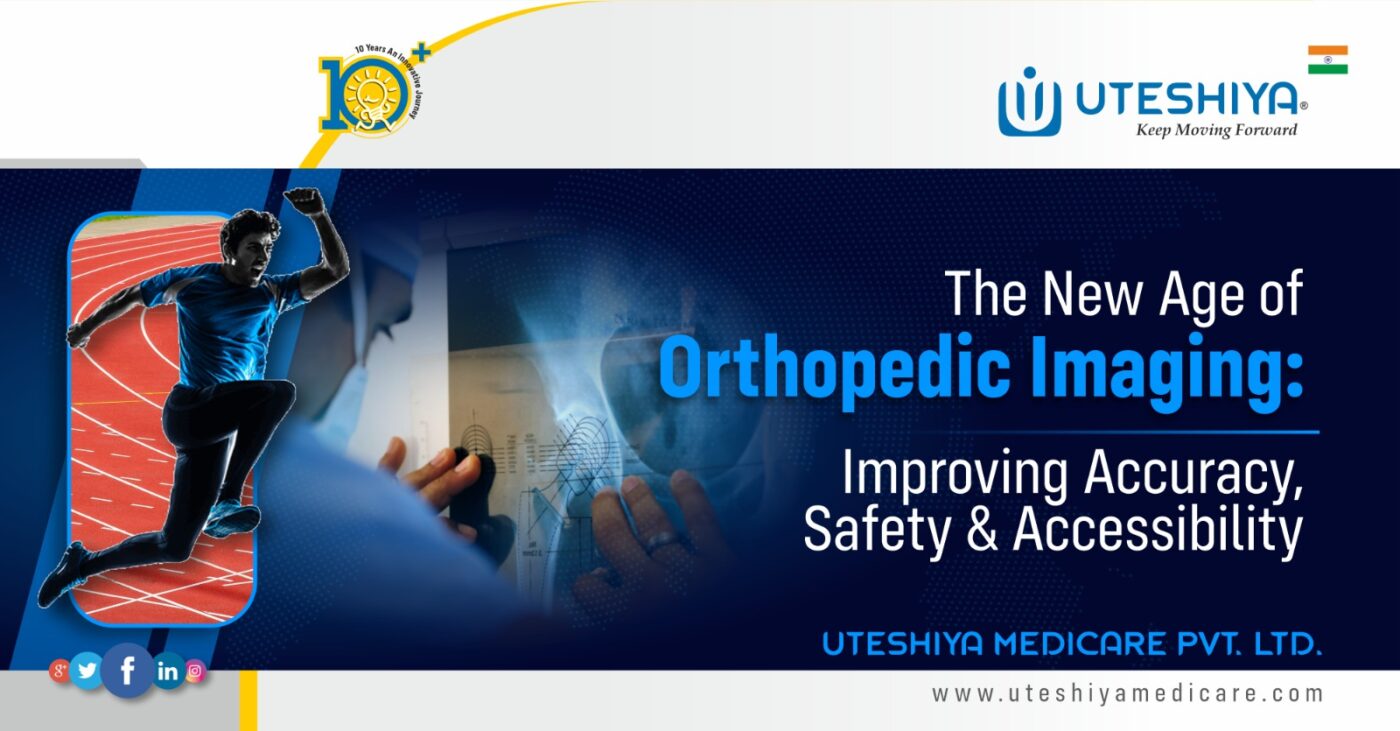Everyone, from young athletes to elderly patients is impacted by bone and joint problems, which are among the most prevalent health concerns. Effective therapy begins with a precise diagnosis, regardless of the severity of the condition, from a minor fracture to more complicated illnesses like arthritis or spine abnormalities. Traditional X-rays, which provided a restricted view of the skeletal system, were a major part of orthopedic care for many years.
However, things have changed. With the use of technologies such as MRI, CT scans, ultrasound, and even artificial intelligence (AI), orthopedic imaging has developed into a highly sophisticated area that allows physicians to see inside the human body considerably more clearly and safely. This development guarantees that more people internationally can get high-quality care while also increasing accuracy and patient safety.
In this blog, we’ll analyze how orthopedic imaging has evolved, the technologies driving the transformation, and what it means for both patients and physicians in the years ahead.
The progression from X-rays to advanced imaging
More than a century ago, X-rays marked the beginning of orthopedic imaging. For a long time, X-rays were the only means to see bones and fractures. While useful, they had limitations: they could not display soft tissues such as muscles, ligaments, or cartilage, and radiation exposure was a problem.
The introduction of CT (Computed Tomography) scans and MRI (Magnetic Resonance Imaging) represented a significant advancement. CT scans enabled the 3D viewing of complicated bone structures, whilst MRIs provided comprehensive images of soft tissues. Together, they supplied orthopedic physicians with a complete image, making it easier to schedule procedures and monitor recovery.
Over time, ultrasonic imaging and digital radiography enhanced safety and efficiency. Unlike traditional film-based procedures, digital systems provide quick results and can be saved and shared electronically, making diagnosis faster and more collaborative.
The Impact of Artificial Intelligence in Imaging
Artificial intelligence is one of the most interesting advances in modern healthcare, and orthopedic imaging is no different. With AI algorithms training on thousands of medical photos, clinicians can now diagnose fractures, joint problems, and bone tumors more quickly and accurately.
Combining AI with standard imaging technologies allows healthcare providers to give better, safer, and more effective therapies.
AI also helps in-
- Predicting outcomes involves predicting recovery durations or potential risks following surgery.
- Automated reports save doctors time by immediately reviewing images and pinpointing trouble areas.
- Enhancing surgical planning by creating 3D reconstructions that assist surgeons in planning minimally invasive operations.
Applications of Orthopedic Imaging
Orthopedic imaging isn’t just for detecting damaged bones. It impacts almost every area of musculoskeletal care. Because it covers such a broad spectrum of disorders, orthopedic imaging has become a vital instrument in both emergency and long-term treatment.
Sports Injuries – Imaging detects ligament tears, muscle strains, and stress fractures early on, avoiding long-term consequences.
Arthritis Management – MRIs and X-rays monitor joint degradation, allowing doctors to adapt therapy strategies.
Spinal Disorders – CT and MRI scans detect herniated discs, scoliosis, and spinal cord damage, which guide difficult procedures.
Post-Surgery Monitoring – Imaging guarantees that implants, prostheses, and bone grafts are appropriately aligned and healing normally.
Why Does Accuracy Matter in Orthopedic Imaging?
In orthopedics, even minor details can have major consequences. A minor imaging inaccuracy could result in an incorrect diagnosis or treatment plan, slowing recovery. Today’s improved imaging tools allow doctors to detect even the slightest abnormalities in bones and joints with high precision. MRI scans produce clear images of soft tissues, which aid in the detection of ligament tears or early arthritis, whereas CT scans map fractures in detail to guide difficult procedures.
With AI now assisting in picture analysis, clinicians may detect tiny abnormalities that might otherwise go unnoticed, ensuring that patients receive the right therapy at the right time.
How Safety Is Prioritized in Modern Imaging
Medical imaging has always been associated with radiation exposure, but modern technologies are making the procedure safer. Compared to earlier techniques, digital X-rays also reduce exposure, and low-dose CT scans now provide detailed data with less radiation.
Children, pregnant women, and patients who require frequent scans should feel safer using MRI and ultrasound because they offer detailed information without any radiation. Patients no longer have to decide between long-term health and accurate findings because of these developments.
What are the challenges and opportunities coming up
Despite significant progress, there are still obstacles to face. High expenses of modern imaging devices, a shortage of experienced personnel, and unequal access in developing countries remain significant barriers. However, the prospect of success appears optimistic. With rapid invention, we can expect the following.
- Smaller clinics can now afford imaging because of more affordable and portable technologies.
- Integrating with robotics and AR (augmented reality) provides surgeons with current image guidance during procedures.
- Continued AI development to eliminate human mistakes and provide immediate analysis.
These developments indicate that orthopedic imaging will continue to grow, making healthcare more precise, safe, and comfortable for patients.
How Accessibility is Altering Orthopedic Imaging.
One of the most significant developments in recent years has been the increased accessibility of imaging to patients everywhere. Previously, advanced scans such as MRI and CT were only available at large hospitals in major cities. With the advent of portable ultrasound instruments, digital X-rays, and mobile MRI systems, even small clinics and remote healthcare centers may now provide quality imaging.
Cloud-based storage and telemedicine integration also enable doctors to review scans from any location, allowing patients in rural places to receive expert opinions without having to travel vast distances. This increased accessibility guarantees that quality orthopedic care is no longer limited to a select few but is available to more communities internationally.
Wrapping It Up
The development of orthopedic imaging, from simple X-rays to AI-powered diagnostic systems, demonstrates how far medical technology has advanced. These innovations have transformed how bone and joint diseases are identified and treated by increasing accuracy, improving patient safety, and making care more accessible.
For patients, this progress means faster responses, safer procedures, and better results. For doctors, it implies increased confidence in decision-making and greater tools for providing world-class treatment. As technology advances, orthopedic imaging will play an increasingly important role in creating the future of healthcare, making it smarter, safer, and more accessible to all.

